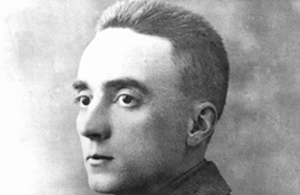WW1 Canadian VC recipient Gordon Muriel Flowerdew
The story of Canadian First World War Victoria Cross recipient Gordon Muriel Flowerdew.

Credit: National Defence Canada
70 men from Canada received the Victoria Cross, Britain’s highest award for gallantry, during the First World War. As part of the Centenary Commemorations the people of the United Kingdom marked their gratitude to those courageous men by presenting a bronze memorial plaque to their home country engraved with their names. The plaque is now displayed at the British High Commission Ottawa. This archive tells their stories.
Name: Gordon Muriel Flowerdew
DOB: 2 January 1885
Place of Birth: Billingford, England
Date of Action: 30 March 1918
Place of Action: Moreuil, France
Rank: Lieutenant
Regiment: The Lord Strathcona’s Horse, Canadian Cavalry
Gordon Muriel Flowerdew was born on 2 January 1885 in Billingford, England, but he emigrated to Canada in 1903. When the First World War broke out, he enlisted in The Lord Strathcona’s Horse of the Canadian cavalry, and he was commissioned in 1916.
Lieutenant Flowerdew was posthumously awarded the Victoria Cross for his leadership on 30 March 1918 at Moreuil, often referred to as the Last Great Cavalry Charge. His citation states:
For most conspicuous bravery and dash when in command of a squadron detailed for special service of a very important nature. On reaching the first objective, Lieutenant Flowerdew saw two lines of the enemy, each about sixty strong, with machine guns in the centre and flanks, one line being about two hundred yards behind the other. Realising the critical nature of the operation and how much depended upon it, Lieutenant Flowerdew ordered a troop under Lieutenant Harvey, V.C., to dismount and carry out a special movement while he led the remaining three troops to the charge. The squadron (less one troop) passed over both lines, killing many of the enemy with the sword; and wheeling about galloped at them again. Although the squadron had then lost about 70 per cent of its numbers, killed and wounded, from rifle and machine-gun fire directed on it from the front and both flanks, the enemy broke and retired. The survivors of the squadron then established themselves in a position where they were joined, after much hand-to-hand fighting, by Lieutenant Harvey’s party. Lieutenant Flowerdew was dangerously wounded through both thighs during the operation, but continued to cheer on his men. There can be no doubt that this officer’s great valour was the prime factor in the capture of the position.
Flowerdew died on the following day and is buried at Namps-au-Val British Cemetery in France. The cavalry charge by Flowerdew’s squadron was depicted in a painting by the war artist, Alfred Munnings.